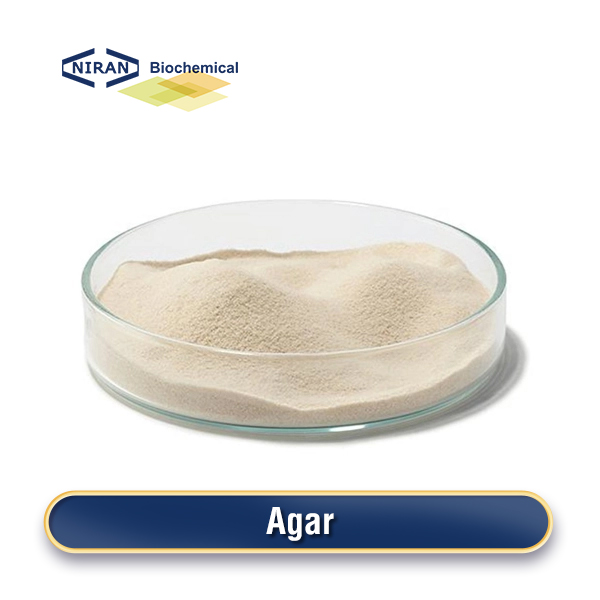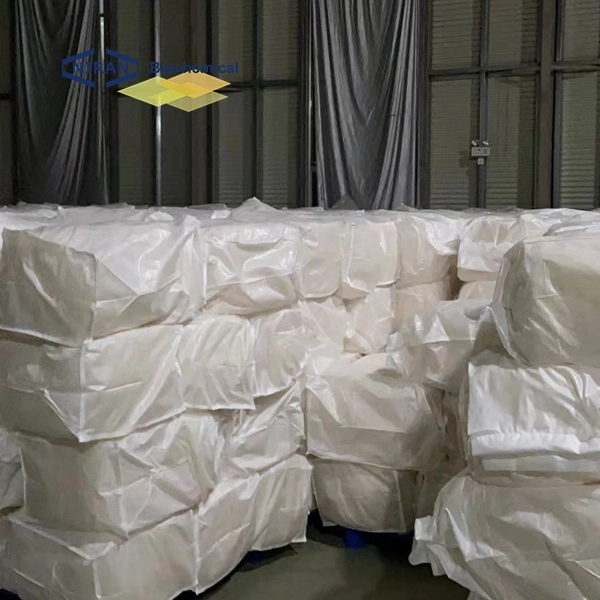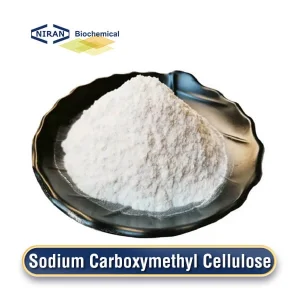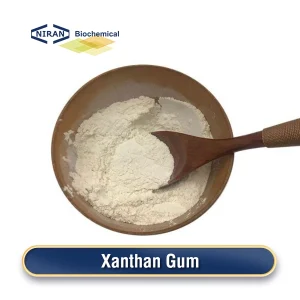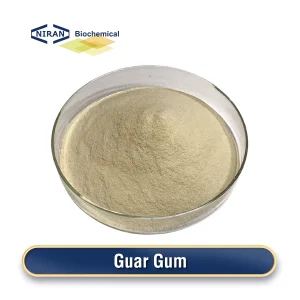What is Agar?
Agar is a natural gelatin extracted from red algae. It appears as colorless, translucent or off-white to light yellow powder or granules. It has no obvious odor and is insoluble in cold water. It is often used as an emulsifier stabilizer and thickener in the food industry.
Agar is usually soaked in water from red algae such as Agara oleracea and Gracilaria truncatula to remove impurities, then soaked and hydrolyzed in sulfuric acid or acetic acid under certain conditions, and then the hydrolyzate is filtered, purified, cooled and solidified to obtain the product.
Related parameters:
| ITEMS | Standard (E406 AGAR) |
| Loss on drying (%) | ≤ 22 |
| ASH (%) | ≤ 6.5 |
| Gel Strength (g/cm2) | – |
| Acid-insoluble ash (insoluble in approximately 3N Hydrochloric acid) (%) | ≤ 0.5 |
| Insoluble matter (after strirring for 10 minutes in hot water) (%) | ≤ 1.0 |
| PH | 4-8 |
| Gelling point | – |
| Mesh | – |
| Starch | Conforms |
| Gelatin and other proteins | Conforms |
| Water absorption | ≤ 75ml |
| As (mg/kg) | ≤ 3 |
| Lead (mg/kg) | ≤ 5 |
| Mercury (mg/kg) | ≤ 1 |
| Cadmium (mg/kg) | ≤ 1 |
| Total Plate Count colonies (cfu/g) | ≤ 5000 |
| Yeast and moulds (cfu/g) | ≤ 300 |
| Escherichia coli /5g | Absent |
| Salmonella spp. /5g | Absent |
Recommended dosage:
| Food name | Maximum usage(g/kg) |
| Jelly and puddings | 2-10 g/kg |
| Yogurt and dairy products | 3-5 g/kg |
| Cakes and desserts | 2-5 g/kg |
| Ham and meat products | 5-10 g/kg |
| Candies | 5-10 g/kg |
| Juice drinks | 2-5 g/kg |
| Sauces and condiments | 2-5 g/kg |
| Marmalade and jams | 3-8 g/kg |
| Syrups | 3-6 g/kg |
| Chewing gum | 2-5 g/kg |
| Bakery products | 3-7 g/kg |
| Dips and spreads | 2-5 g/kg |
| Meat substitutes | 5-10 g/kg |
| Salad dressings | 2-5 g/kg |
Agar has a wide range of uses
1. Coagulant and stabilizer: Agar is a natural gelling agent and is often used to make desserts such as jelly, pudding, and jelly candy. It can form a solid gel structure after heating, allowing the food to maintain its shape and taste.
2. Emulsifier: Agar can be used as an emulsifier to help mix immiscible liquids, such as combining oil and water to make the mixture more uniform and stable.
3. Thickener: In some food processing processes, agar can act as a thickener to adjust the texture and taste of food, such as in ice cream, sauces, and cream.
4. Packaging and fixative: Agar can be used as a fixative in packaged foods to maintain the shape and appearance of food and prevent food from deforming or deteriorating during transportation and storage.
5. Nutritional supplement: Some agar may also contain nutrients, such as collagen-rich agar, which is used as a supplementary source of collagen in some nutritional products.
User asked question:
Q: What are the advantages of agar over gelatin?
A: Compared with gelatin, agar has the advantages of plant origin, higher gel strength and thermal stability, lower usage concentration and is suitable for vegetarians.
In addition, agar is more stable in an acidic environment, and the gel it forms is harder and more brittle, which is suitable for food applications that require high transparency and strong structure.

